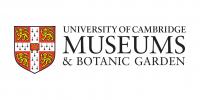The Insect Room at the University Museum of Zoology Cambridge houses one of the most important insect collections in the country outside of the three national museums. There are approximately 750,000 specimens of about 45,000 species, and these include over 1,000 primary type specimens.
Perhaps the most important resource are the primary type specimens, the crown jewels of any biological collection. Pre-eminent here is the Crotch collection of ladybirds (Coccinellidae), which, with over 550 primary types, is taxonomically the most significant collection in the entire Museum and the most important collection of these insects in the world. Ladybirds are of considerable economic importance as agents of biological control, and a firm identification base is critical if they are to be used effectively. This collection was given to the Museum in 1876, and because of its age and quality is essential to any serious student of the classification of these insects. There is a modern published catalogue to the collection, which makes it accessible to the international community. Crotch, who died of TB at the age of 32 in 1874, also amassed an important collection of another beetle family (the Erotylidae), which contains many primary types.
Another taxonomically rich collection is the Disney Collection of scuttle flies (Phoridae). This collection is constantly being added to by Henry Disney, who works in the Insect Room and is the leading world authority on these insects, the most diverse of the fly families, with important roles in a range of ecosystems. The collection contains over 250 primary types and is the most important of its type in the world. The Davies Collection of dragonflies is also still being augmented by the donor, and it contains the most complete collection in existence of world dragonflies at the generic level.
The collections have been enormously enriched over the years by the incorporation of material collected by members of the University on international scientific expeditions. These include the Willey Collection (1897) from New Britain and New Guinea, the Collections of the Skeat Expedition to the Malay Peninsula (1899), the Percy Sladen Collection from the Seychelles (1909), and the Sandwich Islands Committee Collection (1913) from Hawaii. Many of these species are types, and most are from fragile and isolated habitats that are now extremely rare or destroyed: the Malay material, for example, is vital as a record of what species existed in that country before extensive planting with rubber and other crops.
The collection is rich in voucher specimens of published biological material. These are essential if later workers are to be able correctly to interpret earlier scientific work. Perhaps most interesting here are the specimens of the peppered moth in which Doncaster first demonstrated the phenomenon of sex-linkage. The collection also holds the Lepidoptera actually figured in Punnett’s seminal work (1915) on Mimicry. The Disney phorid collection contains not only types, but the voucher specimens of material associated with specific species of termites and ants.
The general British Collection (about 450,000 specimens) gives a good coverage of the British Insect Fauna and is an absolutely invaluable resource for a wide range of research and teaching. We have exceptionally long time series of material from local sites of conservation interest, which include some of the oldest nature reserves in the country. There is a fine collection of butterflies from nearby Wicken Fen, so it is possible to chart the changes in appearance of several species. The British Collection has also been used to describe the rise and fall of industrial melanism in a wide range of insects: such research can only be contemplated with a rich collection of relatively common material made over a long period of time.
The general British and Exotic collections provide a reference of authentically identified species which is extremely useful for students carrying out undergraduate projects, sorting out material collected from expeditions and doing detailed PhD research on particular insect groups or habitats. The current, and much-used, key to British water-beetles was compiled by a biologist using the extensive series of these insects in the British collection.
Most immature insects and some adult groups (e.g. termites) must be stored in alcohol and we have an extensive spirit collection (about 76,000 specimens). These are a useful source of material, especially of immatures, for teaching and research. One spirit collection, the Haviland Collection of Termites (1897) is of very considerable importance: it is the major termite collection of that date, with many primary types, and contains large series of complete nest contents (together with samples of the nests themselves) which makes it an invaluable resource for social insect research.





